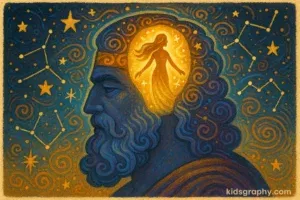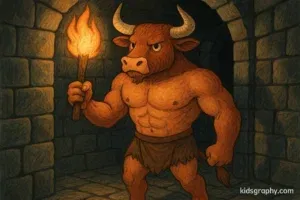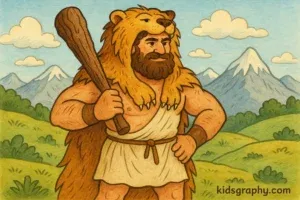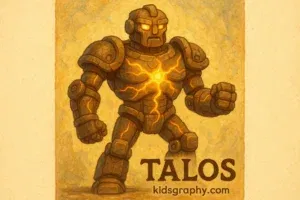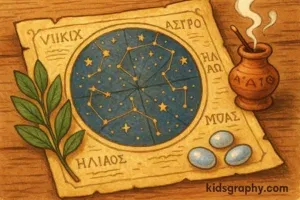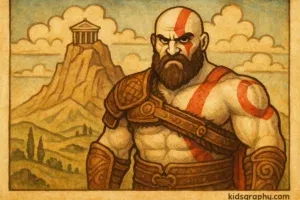In the world of Greek mythology, monsters were more than just scary—they tested the strength and courage of heroes. One of the most terrifying of them all was the Hydra, a huge serpent-like creature with many heads. Each time one head was cut off, two more would grow in its place.
This fearsome beast became the ultimate test for the mighty Hercules, who faced it as part of his legendary Twelve Labors. Let’s explore the origin, powers, and heroic battle of the Hydra in Greek mythology.
Read More: Ares in Greek Mythology: God of War and Fury
What Is the Hydra in Greek Mythology?
The Hydra, also called the Lernaean Hydra, was a gigantic water serpent or dragon. It lived in the swamps near Lake Lerna in the Argolid region of Greece.
What made the Hydra so deadly?
- It had multiple snake-like heads, often nine in total (some myths say even more).
- If one head was cut off, two would grow back in its place.
- One of its heads was immortal and couldn’t be destroyed by normal means.
- Its breath and blood were poisonous, strong enough to kill with just a touch.
People considered the Hydra nearly impossible to defeat—until Hercules came along.
Read More: Perseus in Greek Mythology: Hero, Slayer of Medusa
Hydra and Hercules: A Legendary Battle
The Hydra’s story is best known from the second labor of Hercules, the strongman of Greek mythology. As part of his punishment and path to redemption, Hercules had to perform twelve dangerous tasks. Killing the Hydra was the second.
Here’s how the battle unfolded:
- Hercules traveled to the swamp where the Hydra lived.
- He lured the beast out by firing burning arrows into its den.
- As he chopped off each head, two more would grow back, making it seem impossible to win.
- His loyal nephew Iolaus helped him by cauterizing the necks with a burning torch after each head was removed, preventing new heads from growing.
- Finally, Hercules chopped off the immortal head, buried it under a heavy rock, and dipped his arrows in the Hydra’s poisonous blood.
Hercules used brains, teamwork, and strength to defeat the Hydra, proving that even the deadliest monsters could be outsmarted.
Read More: Hermes in Greek Mythology: Messenger of the Gods
Where Did the Hydra Come From?
In ancient Greek stories, the Hydra was born from some of the most frightening figures in mythology:
- Typhon, a monstrous storm god
- Echidna, a half-woman, half-snake creature known as the “Mother of Monsters”
That made the Hydra a sibling to other deadly beasts like Cerberus (the three-headed dog), Chimera, and the Sphinx.
The Hydra wasn’t just a random monster—it was part of a lineage of chaos and destruction, created to challenge heroes and frighten mortals.
What Did the Hydra Symbolize?
The Hydra in Greek mythology wasn’t just a monster—it carried deep meaning:
- Endless struggle – Cut one problem, and more arise (like the growing heads).
- Courage and intelligence – Brute force alone wasn’t enough to win.
- The power of nature – As a water beast, it showed how nature could be dangerous and wild.
- Rebirth and transformation – The Hydra’s heads growing back symbolized never-ending change.
People still use the term ‘hydra-headed problem’ today to describe a tough situation that gets worse the more they try to fight it—just like in the original myth.
Read More: Typhon in Greek Mythology: The Father of Monsters
Hydra in Art, Literature, and Pop Culture
The Hydra’s image has been passed down for thousands of years:
In Ancient Greek Art:
- Painted on vases, often with Hercules fighting the beast
- Appeared in sculptures and temple decorations
- Used in warrior armor to represent deadly strength
Literature:
- Told in Hesiod’s Theogony and Apollodorus’ Library
- Mentioned in Roman retellings, like Ovid’s Metamorphoses
In Modern Media:
- Featured in films like Clash of the Titans and Hercules
- Used as a symbol in the Marvel Universe (Hail Hydra!)
- Appears in games, cartoons, and fantasy stories worldwide
People remain fascinated by the Hydra’s myth because it blends danger, cleverness, and the belief that some monsters must be faced head-on—no matter how frightening they are.
Read More: Cronus in Greek Mythology: Titan of Time and Power
The Hydra’s Poison: A Weapon Beyond Death
One of the most overlooked parts of the Hydra myth is what happened after its defeat. Hercules, always the clever warrior, didn’t just kill the Hydra and walk away.
He dipped his arrows into the Hydra’s poisonous blood. These arrows became so deadly that a small wound could mean instant death. Later in the myths, Hercules used these poisoned arrows in:
- His battle against the centaur Nessus, whose blood eventually caused Hercules’ own tragic death
- Fights with monsters and enemies, where one shot from his bow was often enough
This small detail shows that the Hydra’s danger lived on, even after it was gone. Its poison became a lasting symbol of how some dangers never truly disappear—they transform.
The Hydra as a Mythical Metaphor
The story of the Hydra teaches more than just bravery—it’s a metaphor for real-life problems.
Cutting off a Hydra’s head only makes more grow back. This became a symbol for:
- Corruption or evil that grows stronger when you attack it the wrong way
- Grief, anger, or guilt that doesn’t go away unless treated at the root
- Complicated challenges that require clever solutions, not just power
Even in ancient times, the Hydra was more than a beast—it was a lesson. It warned people that some battles need strategy and help, not just swords.
Read More: Titans in Greek Mythology: Gods Before Olympus
Lerna: The Swamp of Legends
Ancient Greeks considered Lake Lerna, the Hydra’s home, not just a swamp but a gate to the Underworld. Ancient Greeks believed that:
- Spirits passed through Lerna on their way to Hades
- The Hydra guarded a sacred entrance to the land of the dead
- Slaying the Hydra also meant conquering death’s shadow
This added a deeper, mystical meaning to Hercules’ second labor. He didn’t just kill a monster—he challenged the darkness at the edge of life itself.
In later stories and rituals, Lerna remained a haunted, holy place. The people of Argos even performed secret ceremonies there, linking the Hydra myth to religion and mystery.
The Hydra’s Legacy in Language and Culture
Even today, we use the idea of the Hydra in everyday speech and symbols.
- “Hydra-headed problem” means an issue that keeps growing worse
- People use it in politics to describe corruption or rebellion that they can’t easily stop.
- Creators in pop culture have turned it into everything from villains to logos.
One famous modern use is in the Marvel Universe, where “Hail Hydra” represents a secretive, growing threat. Like the original myth, the Hydra in Marvel shows how cutting down one head only creates more enemies.
The myth continues to inspire, warn, and entertain, proving that ancient monsters like the Hydra are truly timeless.
More Stories: Hydra in Greek Mythology
FAQ: Hydra in Greek Mythology
The Hydra is a multi-headed serpent from Greek mythology, best known for its battle with Hercules during his Twelve Labors.
Most myths say the Hydra had nine heads, and when someone cut one off, two more grew back in its place. One head was immortal.
The Hydra lived in the swamps of Lake Lerna in ancient Greece, a place often linked to the Underworld.
Hercules burned each neck after cutting off a head to stop it from growing back. He buried the immortal head under a rock.
People use the Hydra to symbolize persistence, danger, and complex challenges—problems that grow worse when attacked.
Read More: Ajax in Greek Mythology: Warrior of Honor and Tragedy





